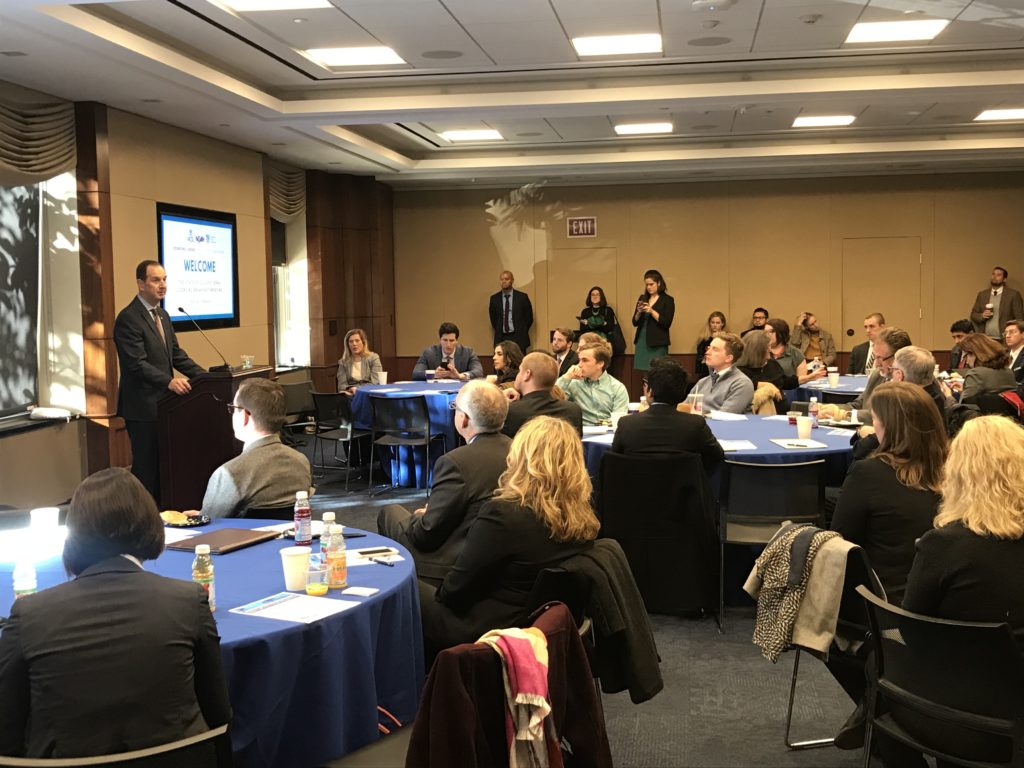
On November 13th, The Council of State Governments, the National Conference of State Legislatures, the National Governor’s Association, and representatives from the states participating in the Occupational Licensing Policy Learning Consortium were on hand to share some of the successes stemming from the multi-year, Department of Labor funded project. The event saw over 60 individuals in attendance, representing a variety of public and nonprofit policy organizations.
Utah Representative Norm Thurston discussed some of the state’s accomplishments during the project, including a very active 2019 legislative session. Rep. Thurston specifically highlighted SB 227 (2017), which provides automatic recognition of occupational licenses held by military spouses, and HB 226 (2019), which authorizes the use of competency-based licensing.
Wisconsin Representative Robert Brooks also presented at the morning briefing to share news on his state’s occupational licensing reform momentum. Included in the highlights were Wisconsin’s recent major reduction in licensing fees that were in part a result from a recent study on the state’s occupational licensing regulations.
Gauri Rege, a researcher from the American Institutes for Research (AIR), introduced the recently completed case studies on the original 11 consortium states, which include Arkansas, Colorado, Connecticut, Delaware, Indiana, Illinois, Kentucky, Maryland, Nevada, Utah, and Wisconsin. AIR authored the studies which examine policy actions from each consortium state through stakeholder interviews and qualitative analyses of the policy process.
With occupational licensure remaining a major focus for states heading into 2020, the policy accomplishments of the consortium states serve as beneficial examples of how both state peer learning and intra-state engagement can help propel continued policy momentum.
This workforce product was funded by a grant awarded by the U.S. Department of Labor’s Employment and Training Administration. The product was created by the recipient and does not necessarily reflect the official position of the U.S. Department of Labor. The Department of Labor makes no guarantees, warranties, or assurances of any kind, express or implied, with respect to such information, including any information on linked sites and including, but not limited to, accuracy of the information or its completeness, timeliness, usefulness, adequacy, continued availability, or ownership. This product is copyrighted by The Council of State Governments.

